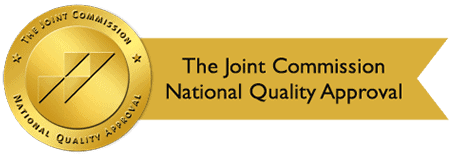By: Design for Change Recovery
Categories:
Addiction Treatment Programs: 10 Facts About Their Success
You are here:Despite the ongoing opioid crisis, many people have beaten their addictions with the help of addiction treatment programs. Studies show that drug rehab success rates are relatively high. But, of the many people who struggle with addiction, only 10% of them seek and get the help they need.
People don’t get treatment for many reasons. Some of them believe they don’t need help. Many may want treatment, but can’t afford it. Others think rehab doesn’t work. Many people feel shame, fear, guilt, or are in denial about their substance use. These emotions play a role in their failure to seek treatment.
In terms of these barriers to addiction treatment, the belief that rehab is not effective is the most prevalent. With that in mind, we’d like to provide some facts that support the success rates of addiction treatment.
A Positive Look at Success Rates of Addiction Treatment Programs

If you or someone you love needs treatment but is unsure that it will work, take a look at these facts about treatment programs. Hopefully, they will encourage you to enter a drug rehab program soon.
- Research shows that 89% of people who complete alcohol rehab are still sober 30 days after leaving the program.
- About 85% to 95% of people who complete drug rehab report 9 months of continued abstinence.
- Approximately 76% of people who completed alcohol rehab are still sober after 3 months, 69% are still sober at 6 months, and about 70% are still sober after 9 months.
- After completing drug or alcohol rehab, 80% of people enjoy an improved quality of health and life.
- More than 43% of people who enter drug or alcohol rehab successfully complete the program. About 16% are transferred to a different rehab for additional therapy.
- Of those who receive medication-assisted treatment (MAT), 41% achieve lasting abstinence.
- Over 40% of people who completed outpatient rehab sought treatment on their own.
- About 67% of people who complete treatment had their program covered by Medicare, Medicaid, or other government assistance programs.
- Between 40 and 60 percent of people relapse after treatment. But, many of them reenter treatment and remain substance-free.
- Admissions to drug rehab are typically 33% for alcohol, 34% for opioids, 13% for marijuana, 11% for stimulants, and 5% for cocaine.
Compared to other treatment programs such as inpatient or partial hospitalization, outpatient programs are more affordable. They provide a high level of treatment for individuals who can’t afford or don’t need the more intensive treatment.
How Can You Determine the Effectiveness of Addiction Treatment Programs?
Obviously, rehab is effective if the person stays sober. But, even if they relapse, it is not a sign of failure. Relapse indicates that the person may not have a supportive environment, or that they left treatment too soon. A little more time spent in treatment or an aftercare program will be beneficial.
Other than staying sober, there are more signs that indicate whether an addiction treatment program was effective. For instance:
- You are healthier and more energetic. Drugs and alcohol lower your body’s immunities and can cause damage to major organs. Eliminating these substances from the body results in improved resistance to illness and disease.
- School or work performance improves. While using drugs or alcohol, they become your top priority. You ignore daily responsibilities such as work, school, or family and friends. After you receive treatment, you are motivated to take care of routine tasks again.
- Relapses are less frequent. Relapse is common after rehab, but how you handle it will determine your success later. With a little extra time in rehab, the periods between relapses will be longer. As you learn more about how to handle daily stress and triggers, you’ll have more control.
- You’ll enjoy better relationships and social interactions. Addiction often results in self-isolation due to the desire to hide the substance use from others. After completing rehab, you’ll no longer feel the need to hide away and will enjoy spending time with other sober people.
Design for Change Recovery – Providing Treatment That Works
Your struggle with addiction doesn’t have to continue. Design for Change Recovery provides effective, accredited, and affordable addiction treatment programs. Our program includes on-site detox, outpatient, inpatient, and aftercare programs to ensure your successful recovery.
While in our program you’ll spend time learning the skills to change negative thoughts and behaviors that fueled your substance use. You’ll also learn methods for recognizing and dealing with triggers that may lead to a relapse. The primary objective of our comprehensive program is to help you heal mentally, physically, and spiritually for lasting recovery.
Our former clients claim that our program changed their lives. We want to do the same for you. Contact our Lancaster, CA facility now and let us help you get back to the sober, happy life you’ve been missing.
Sources:
- nida.nih.gov/– How Effective is Drug Addiction Treatment?
- /nida.nih.gov/- Treatment and Recovery


